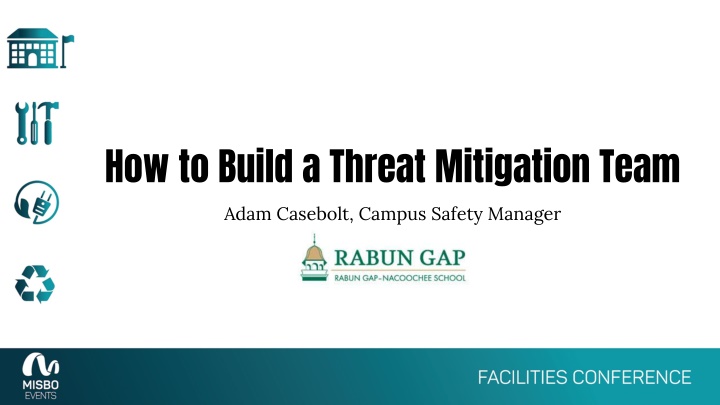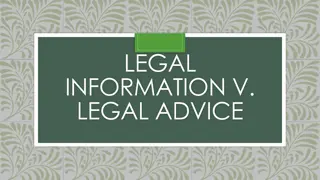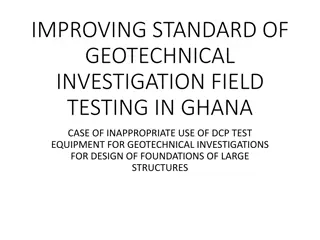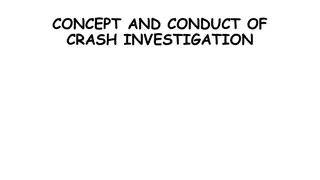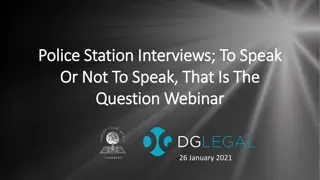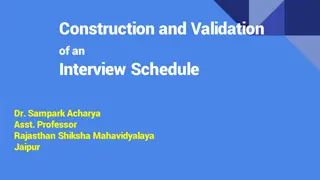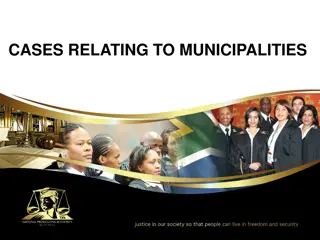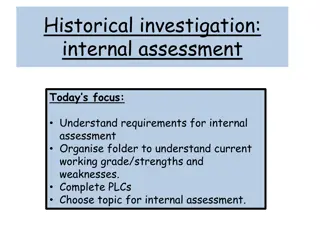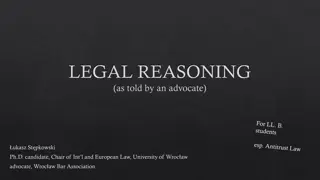Effective Investigation Interviews for Legal Cases
Learn how to conduct thorough investigation interviews for legal cases, from identifying witnesses to asking the right questions. Understand the importance of preparation, conducting initial interviews, interview basics, and what to avoid during interviews. Get valuable insights on getting the necessary details during interviews to gather crucial information for your case.
Download Presentation

Please find below an Image/Link to download the presentation.
The content on the website is provided AS IS for your information and personal use only. It may not be sold, licensed, or shared on other websites without obtaining consent from the author.If you encounter any issues during the download, it is possible that the publisher has removed the file from their server.
You are allowed to download the files provided on this website for personal or commercial use, subject to the condition that they are used lawfully. All files are the property of their respective owners.
The content on the website is provided AS IS for your information and personal use only. It may not be sold, licensed, or shared on other websites without obtaining consent from the author.
E N D
Presentation Transcript
How to Build a Threat Mitigation Team Adam Casebolt, Campus Safety Manager
Preventing Targeted Violence: Secret Service National Threat Assessment Center The U.S. Secret Service National Threat Assessment Center, also known as NTAC, provides research, guidance, case studies, training, and consultation on topics related to behavioral threat assessment and the prevention of targeted violence. NTAC s multidisciplinary team of subject matter experts is comprised of social science researchers and regional program managers who support our partners in law enforcement, schools, government, and other public and private sector organizations working to prevent targeted violence in communities across the United States.
What is a Threat Assessment? Consistent, fact-based, investigative approach Identify, inquire about, assess, and manage individuals at risk for violence against themselves or others Goal is prevention not prediction
The Pathway to Violence Threat Assessment Process
Behaviors & Indicators Warning Behavior(s) Stressors Risk Factors Indicators of Potential Imminence Protective Factors
Does your institution have a threat assessment team? What does that team look like?
Getting Started Leadership Buy-In Identifying Team Membership Procedure Development Team Training / Tabletops Formal Deployment
Assembling a Team What does a multidisciplinary team look like for your organization? School Counselors / Clinician* Campus Safety / Security* Human Resources Director* Student Life / Residential Life* Divisional Heads of School Outside Law Enforcement?
Best Practices Meet regularly Maintain confidential documentation Establish boundaries Recognition of triggering events Assembly of the team upon reported concern or threat Identify mitigation measures and support resources Monitor progress and remain engaged
Allowing Preferred Outcome to Dictate Assessment Process Using the Process as a Discipline Tool Ignoring Special Cases Having a Short-term Memory Having a Poor Culture of Reporting Concerns Not Assembling the Entire Team
Landmark Case Studies Columbine HS - 1999 (Public High School) Virginia Tech - 2007 (Post-Secondary Institution) Sandy Hook Elem. - 2012 (Public Elementary) Covenant School - 2023 (Independent School) What is the significance of each of these incidents? What do these incidents have in common?
Resources Enhancing School Safety Using a Threat Assessment Model - NTAC Threat Assessment Toolkit - Texas School of Safety Center Behavior Threat Assessment and Management (BTAM) Best Practice Considerations for K-12 Schools - Nat. Assoc. School Psychologists
Adam Casebolt acasebolt@rabungap.org
